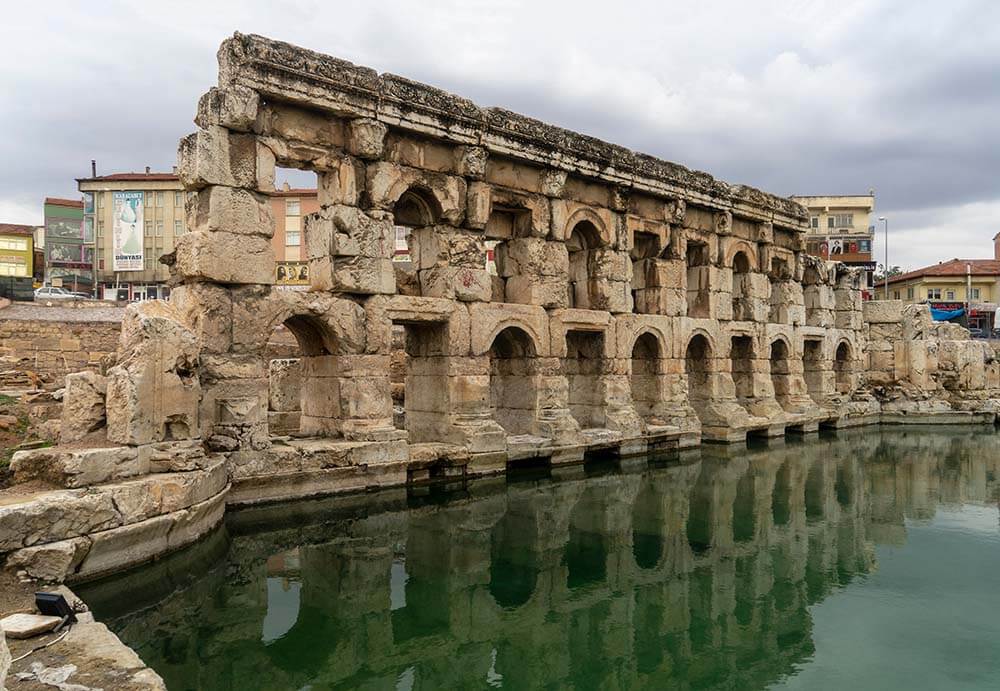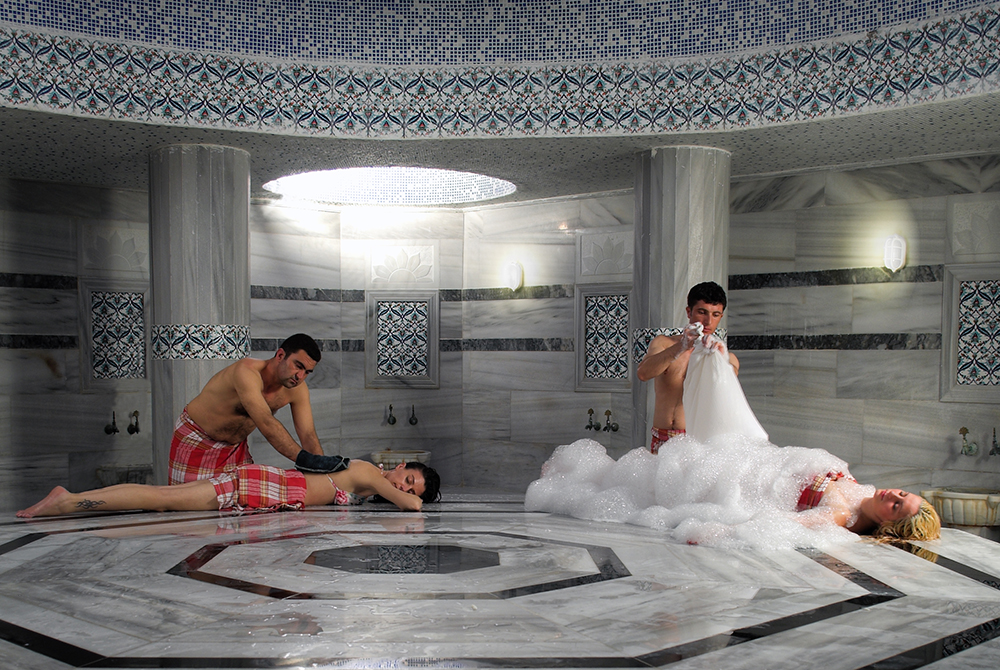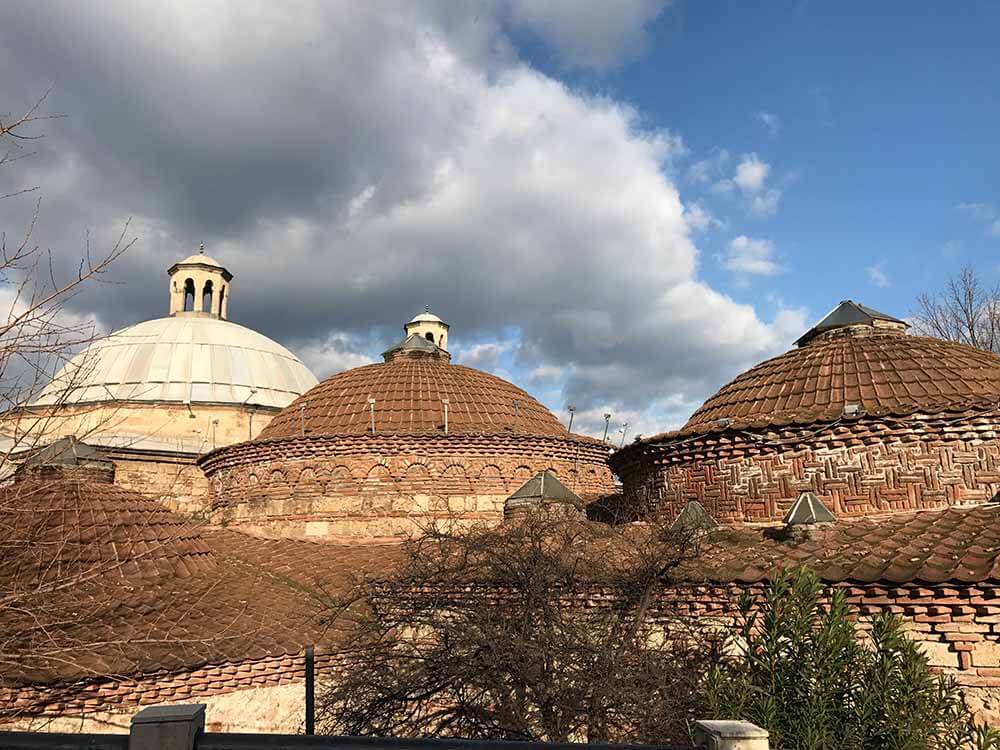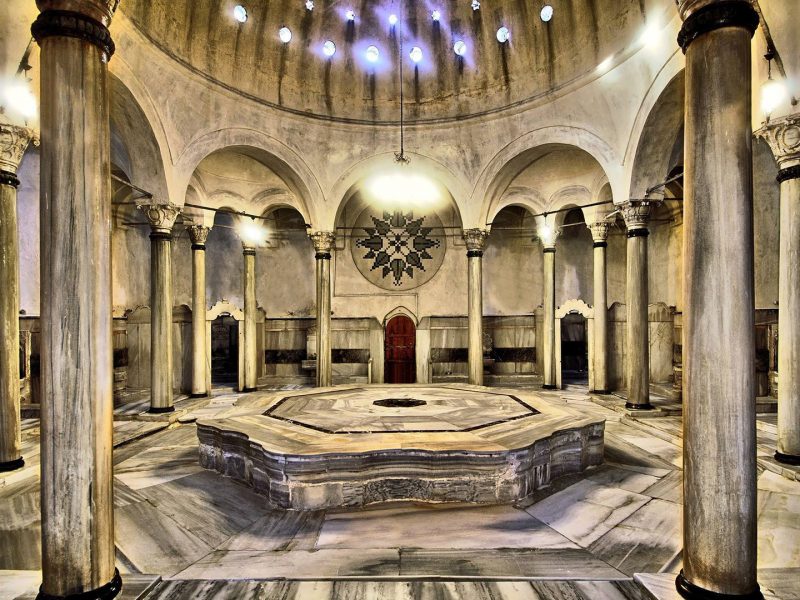The Turkish bath culture holds an important place Turkish culture in general. As the most globally known Turkish practice, the heritage of the Turkish bath phenomenon has survived since the Ottoman Period. Dating back to the Roman Period, Turkish bath culture settled into Turkish culture after the acceptance of Islam due to the importance Islam gives to hygiene.
Turkish bath was performed more often in the past and people used to need excuses to go to bath. Now, it is not popular as it used to be. Different activities such as groom bath and the bride bath, (intended for a bride-to-be and the potential grooms’ mother), or a company bath are organized for entertainment.

The Roman bathhouses in Yozgat. Bath culture is an old heritage in Anatolia.
When we study archaeological data, it is clear that the bath culture dates back to ancient times. Although studies show remnants of quite different bath styles, existence of the bathes as they are known today (hot water and heated inside) were discovered to belong to Athens in 5 B.C. Ancient bathes were different in terms of structure, but then they underwent a transition and have survived until today.

Turkish bath culture settled into Turkish culture after the acceptance of Islam due to the importance Islam gives to hygiene.
Çemberlitaş Bath was the first public bath built by Sinan the architect with command of the mother of III. Murat, Nurbanu Sultan in 1584. After this construction, the number of baths rapidly increased. Turkish bath consists of three parts.
These include:
- Changing Rooms: This place has partitions, where people can rest on sofas after the bath
- Bath Rooms: This place also has partitions. The division called Halvet is used individually, as a point for chats. On the other hand, everybody can take a bath in the Kurna division. In the middle of the bath room, there is a structure called ‘Göbek Taşı’ (Navel Stone). It is designed in different geometrical shapes and built above the ground, in order to make people rest, and had massage or scrub (kese).
- Heating Section: This portion is actually under the bath and a fire is lit there. Smoke coming from the fire goes out from the chimneys through specially designed gaps between the walls inside the bath. Over the heating section (Külhan), there is both hot and cold water tank. Several parts under the heating area go into the dark area which is under the navel stone. That’s why this part is sometimes labeled “hell”.

Turkish bath consists of three parts: Changing rooms, bath rooms, heating section.
Turkish bath is preferred by sportsmen and those who want to lose weight because it is possible to sweat easily due to the hot water and steam; the bath also has positive effects on health. Rubbing with a sponge and massage are performed on the sweaty body, aiding the body in getting rid of dirt and accelerating blood flow. People bathing here need to follow some rules. For example, they should not stay for a long time because extremely hot or cold water can actually in turn cause some health problems.

The domes of a historical Turkish bath (hammam) in Bursa, Turkey.
Peştemals (waist clothes) are used to cover the body in the bath. Takunyas, or bath slippers, are worn to prevent slipping. There are workers on site who help people bathe in Turkish baths. Female workers are called natır and male workers are called tellak. The most famous Turkish baths are Çemberlitaş, Cağaloğlu, Galatasaray, Haseki, Mustafa Bey, and Sokullu Bath.

